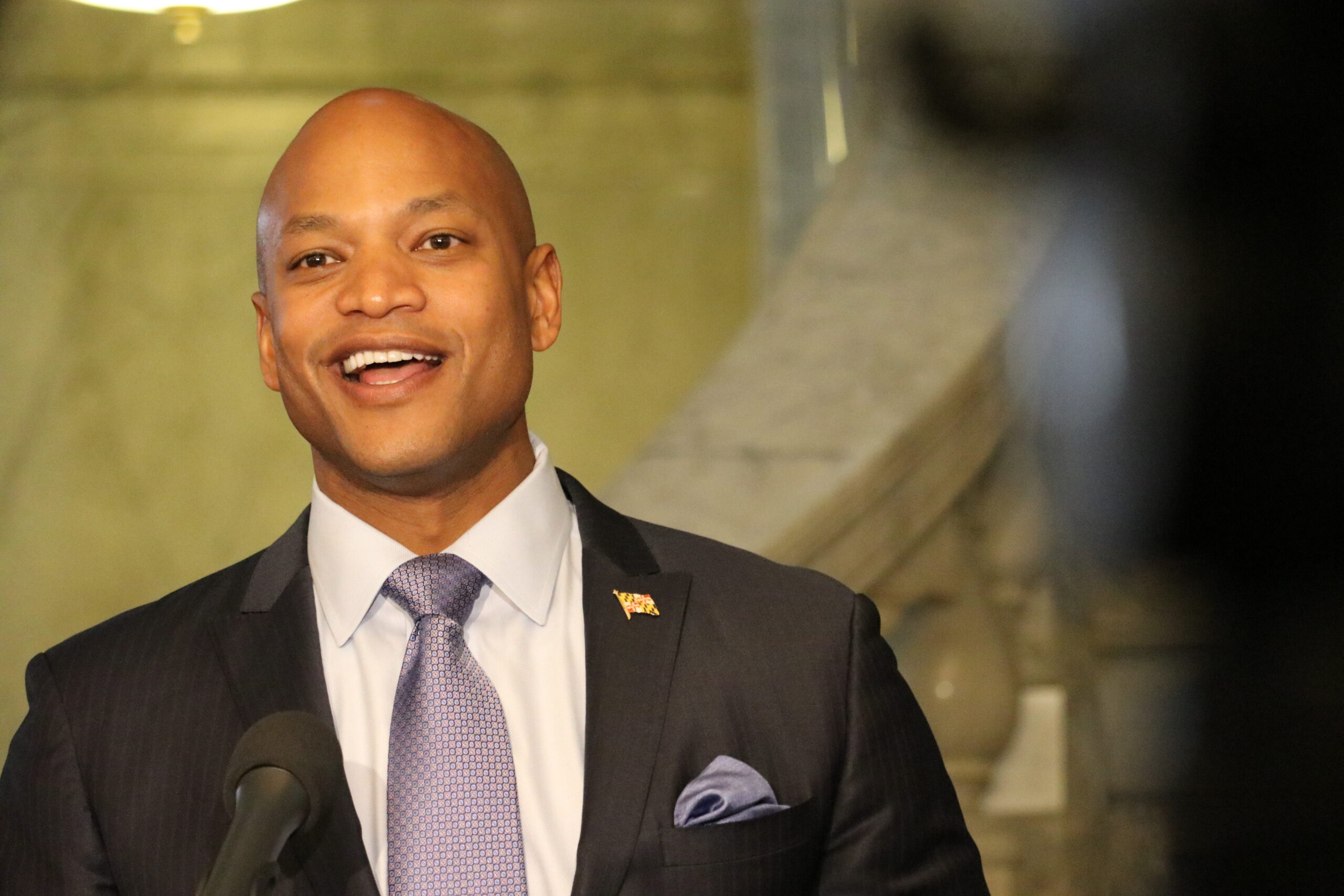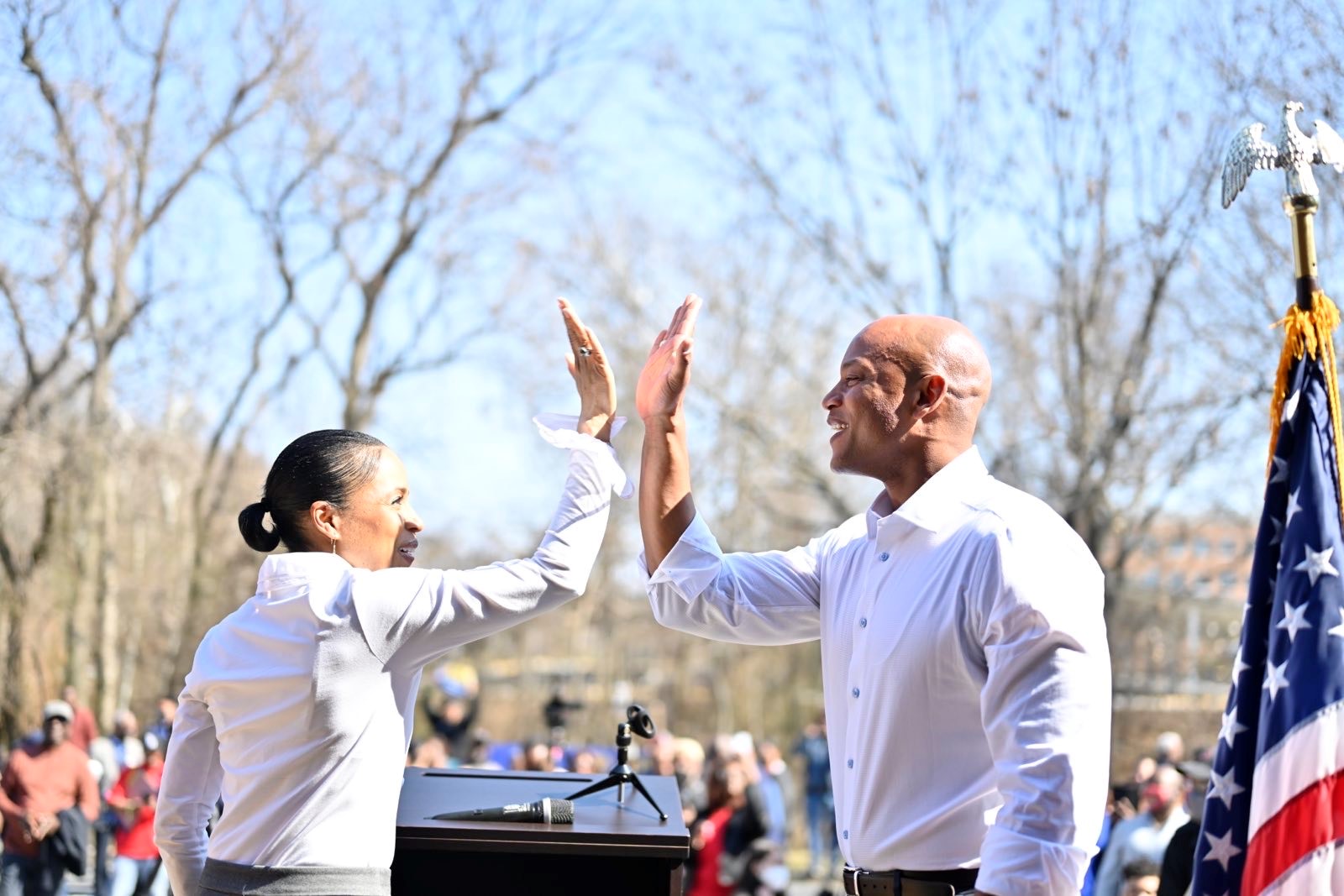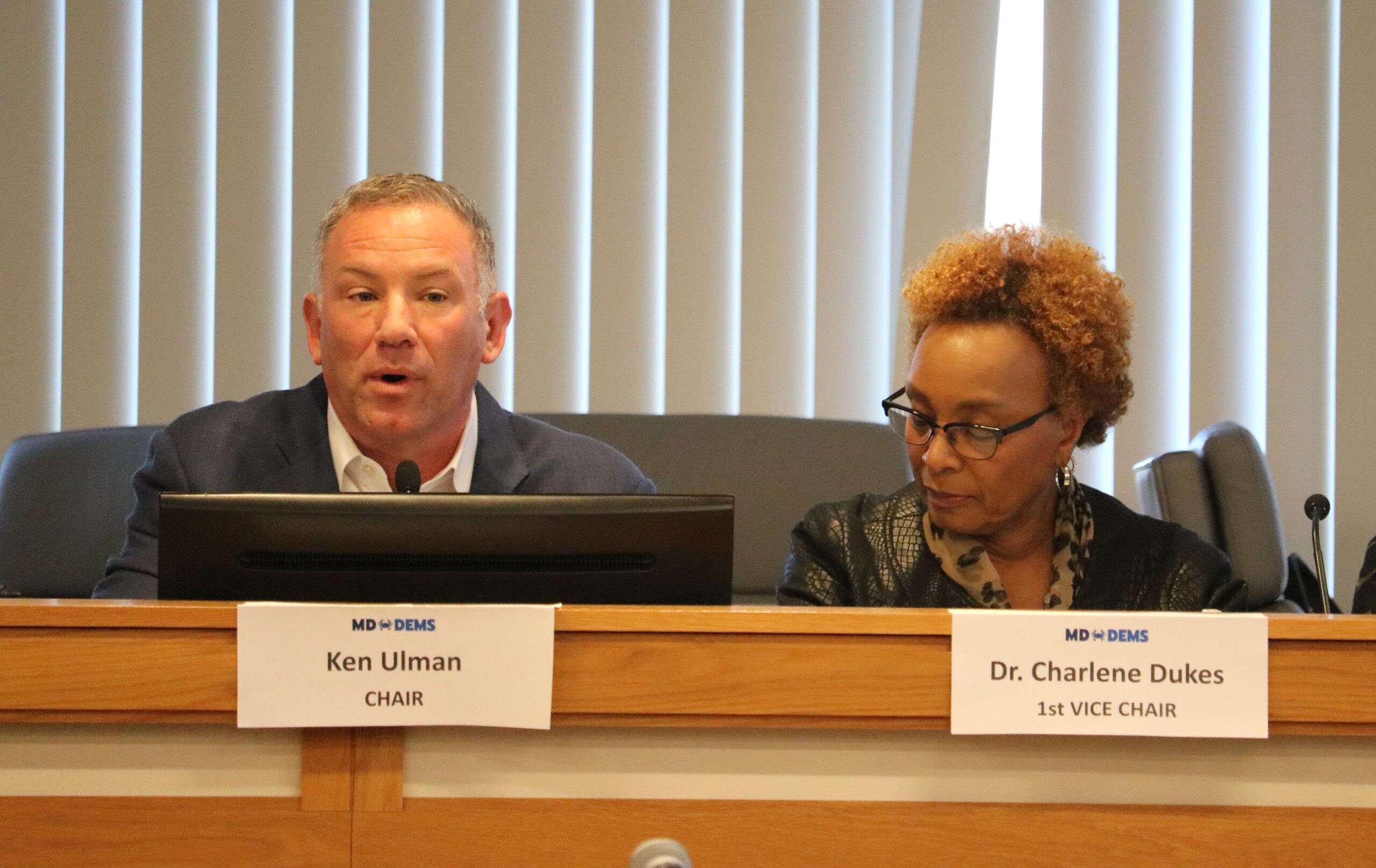New leadership in Chesapeake Bay states raises hopes for action in 2023

By Jeremy Cox, Timothy B. Wheeler and Ad Crable
Bay Journal
New Democratic governors with “green” pedigrees in Maryland and Pennsylvania are fueling environmentalists’ hopes of progress during this year’s legislative season.
Meanwhile, a Republican governor in Virginia is trending greener than many had expected as he enters his first full calendar year in office. That has some activists seeing opportunities for compromise.
Here’s how environmental issues are shaping up in the three key Chesapeake Bay watershed states during their 2023 lawmaking sessions.
Maryland
Maryland environmental groups hope to make big strides in 2023, with a new governor taking office. Democrat Wes Moore ran on a platform pledging aggressive actions to fight climate change, protect the Chesapeake Bay and push for environmental justice.
That would be a change from the past eight years, when climate and environmental activists often sparred with two-term Republican Gov. Larry Hogan. At times, they successfully lobbied the overwhelmingly Democratic legislature to buck him, including overriding his vetoes of bills protecting oyster sanctuaries and promoting renewable energy.
Moore will have a new legislature to deal with, but one still firmly controlled by Democrats, who in 2022 pushed through sweeping climate legislation and a wave of other environmental bills. The 90-day General Assembly session began Wednesday.
“Maryland voters have elected leaders who are committed to protecting the environment, improving public health and addressing inequities,” wrote Rich Norling, the Maryland Sierra Club’s political chair, on the group’s website. Environmentalists hope to work with the new administration and legislature to enact “big and bold solutions” for the climate crisis, environmental justice and “good, family-sustaining green jobs,” he said.
During his campaign, Moore faulted the Hogan administration for a “failure of executive leadership” on fighting climate change, and he pledged to make it a priority.
He embraced the ambitious goals lawmakers set in 2022 of reducing greenhouse gas emissions 60% by 2030 and reaching net zero emissions by 2045. He further promised to set the state on a path to get 80% of its energy from clean sources by 2030 and 100% by 2035.
To get there, Moore said that he’d “leverage” billions in federal funds being distributed to all states to increase solar installations, expand Maryland’s wind industry and invest in battery storage research and development. He also said he’d invest more in climate-friendly transportation, including electrifying public transit and school bus fleets.
The incoming governor said he’d work with climate scientists, local governments and others to mitigate coastal flooding caused by rising sea level and land subsidence and to ease extreme heat experienced in the state’s urban areas.
To help restore the Bay, Moore said he would “promote accountability and enforcement” in Maryland as well as in neighboring states. He vowed to increase the number of environmental inspectors, something lawmakers had pressed Hogan to do in 2022. Moore said he’d again use federal infrastructure funds to upgrade water and wastewater systems, improve stormwater management and clean up Baltimore’s sewage-plagued Inner Harbor.
Encouraged by Moore’s election, environmental groups hope to advance legislation that fell short in previous years. They’ve banded together seeking to expand solar energy, require more sustainable buildings, extend energy conservation to low-income households and protect more of the state’s lands from development.
“We’re working very hard to ensure that the administration is postured to make really ambitious progress on climate and equity issues,” said Kim Coble, executive director of the Maryland League of Conservation Voters and co-chair of the Moore transition committee on climate and the environment.
Maryland’s pilot “community solar” program is slated to expire in 2024 unless reauthorized this year. Under it, residential and commercial utility customers unable to install their own photovoltaic panels could subscribe to receive electricity from small to medium-size solar projects. In addition to renewing the program, green groups want to expand access to solar projects for middle– and low-income households.
After coming up short repeatedly, activists hope to finally win passage of sustainable buildings legislation, which would require state-funded structures to conserve energy and prevent bird deaths. Advocates are also looking to revive the Maryland the Beautiful Act, a land conservation measure that failed in 2022. The new version of the bill would aim to conserve up to 40% of the state’s land and water by 2040.
Josh Kurtz, Maryland director of the Chesapeake Bay Foundation, said his group also intends to seek legislation to promote more “living shorelines,” address the findings of a recent study showing the state continues to lose forest to development, and boost the state’s modest oyster farming industry.
Pennsylvania
Pennsylvania’s environmental groups see an opening for meaningful advances in legislative action in 2023.
Their guarded optimism is buoyed by an influx of federal energy funding, an apparent new slim Democratic majority in one chamber, a new Democratic governor who has prosecuted the natural gas industry multiple times recently as state attorney general, and the retirement of a key committee head in the House who has frozen movement of environmental bills for years.
“With a new governor and a significant number of new legislators, this moment presents a strong opportunity to pursue a more comprehensive approach to energy and climate issues,” said John Walliser of the Pennsylvania Environmental Council.
Among the priorities of environmental advocates is an expansion of Pennsylvania’s expired mandate for renewable energy known as the Alternative Energy Portfolio Standards. It called for 8% of the state’s electricity to be generated by renewables, which was met in 2021 and has plateaued.
“We want at least 30% renewables by 2030,” said Ezra Thrush, senior director of governmental affairs for the environmental group PennFuture. “We really could be a leader in clean energy. We could be a leader in solar. But public policy spurs that.”
Passage of a bill to allow “community solar” in Pennsylvania is high on the environmental wish list.
That would allow residents who can’t install solar panels on their own home, or people who live in apartments, to pay for a portion of a local, privately developed solar array. They would then receive a credit on their electric bill for the solar power generated, saving them money.
Despite bipartisan support, community solar bills have stalled in the House Environmental Resources and Energy Committee for several years. But Rep. Daryl Metcalfe, the Republican chair of the committee and a climate-change denier, is retiring.
Democrats hope to appoint one of their own to head the committee. But, to begin the 2023 session, Republicans will still control the House because one Democrat who was elected has died and two others were elected to other offices. Special elections must take place in the Democratic-leaning districts before the party could have a majority in the House.
The battle to complete Pennsylvania’s enrollment in the carbon cap-and-trade Regional Greenhouse Gas Initiative (RGGI) will likely continue in the upcoming legislative session but may finally see a resolution. Pennsylvania formally joined 11 other states in their efforts to reduce greenhouse gases in April after a combative three-year effort by Democratic Gov. Tom Wolf. But Republican legislators, who consider Wolf’s executive action for RGGI membership an impermissible overreach, have blocked membership with court appeals.
Democratic Governor-elect Josh Shapiro has not committed to joining RGGI but has promised to resolve the issue as soon as he gets in office.
Mark Szybist, senior attorney for the Natural Resources Defense Council and a member of Shapiro’s transition team, said he is confident Shapiro will defend the state’s RGGI membership in court and add Pennsylvania as a full-fledged member.
As attorney general, Shapiro levied three high-profile prosecutions of natural gas and pipeline companies for pollution violations. He also convened a special grand jury that found fracking is harming human health and the environment. The grand jury made several recommendations, including expanding no-drill zones, requiring fracking companies to reveal all chemicals used in the process and exploring the health effects on people living near wells.
Groups intend to press Shapiro and legislators to act on those recommendations.
“Some of those recommendations could fairly easily be translated into legislation,” said Jennifer Quinn of the Pennsylvania Chapter of the Sierra Club. “The cumulative impacts of air pollution have always been lacking in permitting.”
Virginia
In his first budget proposal, Virginia’s Republican Gov. Glenn Youngkin put forward spending amendments that exceed his Democratic predecessor’s totals for restoring the Chesapeake Bay. Conservation groups say they are pleased on that front but are less enthused with his climate and energy policies.
In Virginia, state budgets are negotiated for two-year periods. Youngkin’s amendments bring the state’s spending to clean up local waterways and the Chesapeake to nearly $1 billion more than the 2023 and 2024 fiscal years. The budget put forward in December suggests layouts of:
- $237 million to Virginia’s wastewater treatment plants for investments that reduce nutrient pollution in waterways. That would be added to the $70 million already budgeted by Younkin’s predecessor, Ralph Northam.
- $137 million for Virginia’s programs that help farmers adopt important conservation practices. This amount, if approved by the legislature, would be in addition to the appropriation of $286 million over two years made by the General Assembly last year.
- $100 million to update Richmond’s combined sewer-stormwater system, which discharges pollution to the James River during heavy rains.
“It’s good to see the Gov. Youngkin administration walk the walk,” said Reed Perry, manager of external affairs for the Chesapeake Conservancy. “They’ve said the Chesapeake Bay is going to be a priority, and accelerating [restoration] progress, and it’s nice to see the budget backing that verbal commitment.”
The legislative session began Wednesday and will last for 30 days unless lawmakers vote to extend its length. A final budget will likely involve a compromise. Republicans hold a four-seat majority in the House while Democrats hold a three-seat majority in the Senate.
The biggest battle will likely involve the state’s participation in the Regional Greenhouse Gas Initiative. The Younkin administration has begun taking steps to withdraw Virginia from the climate program. In December, the state Air Pollution Control Board, reconstituted under four Youngkin appointees, voted to end the state’s involvement in RGGI, putting the administration a step closer to its goal.
Several environmental groups argue that Youngkin cannot pull out of the program without the legislature’s support.
Youngkin’s budget suggests replacing the money that would have been raised by RGGI with what it calls a Resilient Virginia Revolving Loan Fund. The first year would make available $200 million in loans or grants, but that funding relies on the emergence of surplus revenue.
Some environmental groups welcome the proposal. But they say it should not replace RGGI, which has raised $150 million so far for flood resilience efforts in the state. The loan fund’s critics also say that, unlike the RGGI fund, it doesn’t dedicate 25% of its receipts to limited-resource communities.
“We’re certainly open to what’s been proposed, but we don’t think it needs to be an either-or scenario,” said Pat Calvert, campaigns manager for the Virginia Conservation Network.
In a move long sought by many conservationists, the administration also calls for spending $225,000 to assess the Bay’s blue crab population. Proponents say that such a study would help protect the crustaceans from overfishing.
Some environmentalists, though, are less supportive of Youngkin’s $10 million proposed investment in the Virginia Power Innovation Fund, which would fund a study of small modular nuclear reactors, carbon capture technology and hydrogen energy. Critics call the technologies unproven.




 Creative Commons Attribution
Creative Commons Attribution